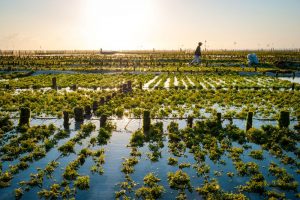 Worry for single-use bundling and plastics in the seas has soar lately as the outcomes of our expendable culture have become apparent in all regions of the planet. Indeed, studies have shown that the American public is similarly or considerably more worried about maritime plastic than environmental change. Albeit the idea of bioplastics is engaging, supportability concerns remain. One of these worries is the effect of the data sources. For instance, developing corn, a typical contribution for bioplastics, impacts untamed life natural surroundings, utilizes petroleum products, and taints water.
Worry for single-use bundling and plastics in the seas has soar lately as the outcomes of our expendable culture have become apparent in all regions of the planet. Indeed, studies have shown that the American public is similarly or considerably more worried about maritime plastic than environmental change. Albeit the idea of bioplastics is engaging, supportability concerns remain. One of these worries is the effect of the data sources. For instance, developing corn, a typical contribution for bioplastics, impacts untamed life natural surroundings, utilizes petroleum products, and taints water.
Be that as it may, imagine a scenario in which there were an economical bundling material produced using something as normal and ample as kelp.
Exploring Seaweed in Packaging and Paper Products
DS Smith, a British global bundling organization, is investigating the utilization of ocean growth in bundling and paper items. Specifically, it is exploring whether ocean growth could fill in as an elective material to wood or as a boundary covering in containers, paper wraps, and cardboard plate. In the event that fruitful, it would be quick to adopt this strategy in the business.
The organization is investigating “ocean growth’s solidarity, versatility, recyclable properties, adaptability, and cost,” says Giancarlo Maroto, overseeing chief, paper, ranger service, and reusing for DS Smith North America.
The creation interaction could utilize less energy and have less synthetic contributions to remove filaments, says Maroto. Albeit this appears to be extremely encouraging, there isn’t yet sufficient data to assess ocean growth bundling from a manageability viewpoint. Makers should approach dependably developed and gathered ocean growth to produce the reasonable bundling arrangements we want.
Developing Commercial Demand for Seaweed
Albeit certain individuals might consider ocean growth simply the foul stuff on sea shores, beach front individuals have burned-through it since ancient occasions and the Japanese, Koreans, Chinese, and Native Americans have utilized it for a really long time. Today, it is a not unexpected fixing in close to home consideration items, creature feed, and compost. There is even examination into utilizing ocean growth in biofuels.
As the business utilizations of ocean growth increment, request has soar, which has kept costs generally high. Simultaneously, the ocean growth industry has set out monetary open doors for waterfront networks. At present, most ocean growth is developed and gathered in Asia, yet as request keeps on developing, that pattern is evolving.
While some kelp is wild-reaped, different sorts are cultivated utilizing floats and lines. Despite the fact that ranchers can develop ocean growth in a manner that is regenerative and requires no compost, freshwater, or feed inputs, this isn’t generally the situation. Impractical kelp creation cycles could just move a considerable lot of the natural effects of dispensable bundling from land to the sea, instead of disposing of them.
DS Smith’s Goal of 100% Recyclable Packaging
DS Smith has defined an objective to produce 100% recyclable bundling inside two years. The organization needs to supplant a billion bits of grocery store and internet business plastic by 2025. As of now, the reusing business is tormented with issues, particularly in regards to plastics. For instance, just around 9% of all plastic created has been reused.
Plastic reusing has many difficulties, including conflicting interest for the reused material, absence of reusing foundation, and the intricacy of handling a wide range of kinds of plastic. Preferably, ocean growth bundling could assist with supplanting a portion of the plastic bundling right now available. It has the advantage of being normally biodegradable and effectively recyclable, as indicated by DS Smith.
Examination into kelp in bundling and paper items is essential for a $140 million venture by DS Smith into the roundabout economy more than five years. It is likewise investigating other elective strands, including straw, hemp, miscanthus, and horticultural waste, including cocoa shells and the mash fiber stays after sugar stick handling.
Will Seaweed Meet the Need for Sustainable Packaging?
DS Smith presently can’t seem to deliver some basic subtleties, like what kind of ocean growth is great, where organizations would source it, and in the event that our current reusing framework can deal with kelp bundling. Without essential data, it is hard to contrast a speculative item with existing bundling and paper items.
Albeit amazingly advantageous, expendable bundling is innately inefficient in light of the fact that we utilize these materials for an exceptionally limited reason. While reuse is higher on the waste decrease pyramid than reusing, expendable bundling is seldom reused. However, the idea of bundling from kelp is promising, particularly on the off chance that finish of-life advantages, for example, are as a rule promptly recyclable and biodegradable.
Specialists are additionally investigating the idea of limitlessly recyclable plastic. Despite the fact that it very well may be more costly to create, producers could utilize the materials over and over. Ideally, we will see significant upgrades in item bundling soon. This will give green-disapproved of customers more choices to make buys that line up with their qualities.
